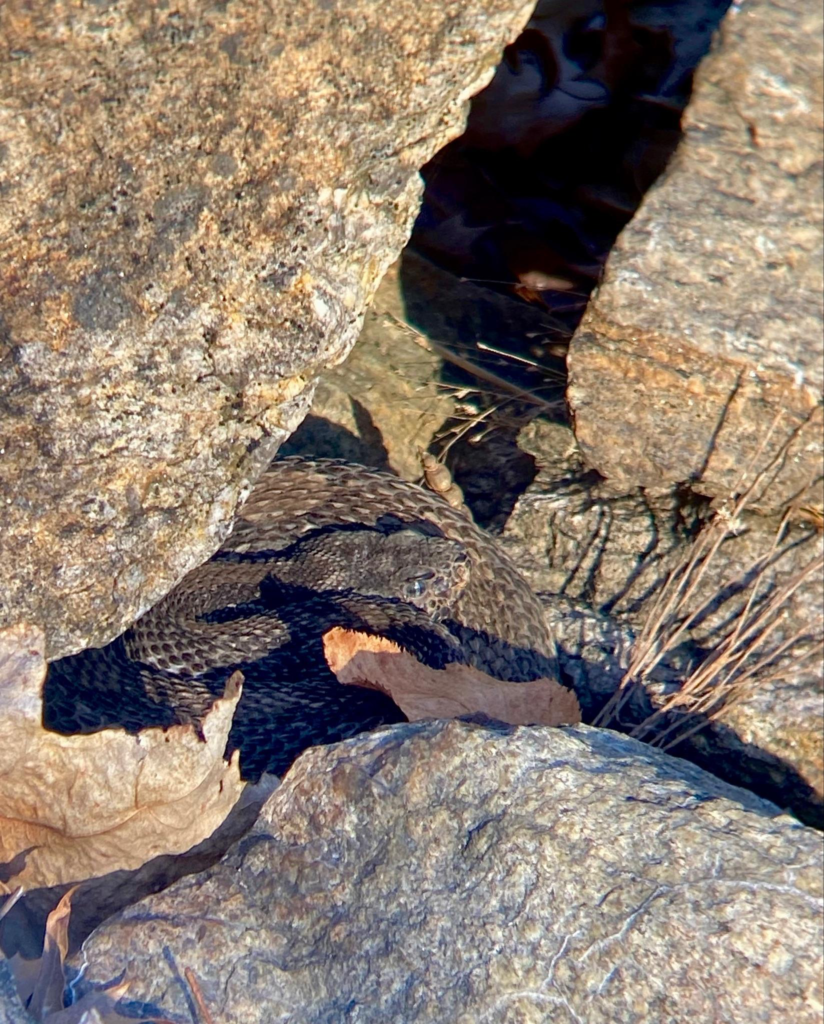When I submitted my essay “Buddhism and Haiku: The International Inheritance of a Poetic Past” on March 28, I was required to include a proposal of a “creative project” which would “illuminate aspects of the topic that would otherwise not be able to be expressed through a standard academic paper”. Based on the topic of my paper – an investigation of the Buddhist roots and aspects of haiku, a short-form style of Japanese poetry – the subject of the project was obvious. Haiku is often considered one of the most accessible forms of poetry for authors to engage with, due to its relatively easy-to-grasp meter; in English, it is formed by three lines of 5, 7, and then 5 syllables. A collection of haiku seemed the clear choice. As I started to mull over this endeavor, however, I found myself slightly lost as to the direction that I was going. My familiarity with the genre, despite the amount of research I had done for my paper, was very limited – I had investigated poems with a Buddhist angle only. I am not a Buddhist, and I felt that a collection of poems attempting to espouse or even express a Buddhist lens would be inappropriate and, for me, unenjoyable. A question that Professor Watanabe had posed to me in response to my project proposal remained unanswered in my mind: “What does being faithful to the [haiku] tradition mean for [a] 2022 Wesleyan student?”
I began to gain more direction with the arrival of Basho: The Complete Poems (translated into English by Jane Reichhold) at WesStation. It came to me only the day after I submitted my paper. My curiosity had been aroused by the poems of Basho, usually considered the greatest master of classical haiku, that I had read while writing it. This surprisingly slim, shiny black book captured my attention immediately. Reichhold’s literal translations were sometimes inaccessible, considering the very different grammatical structures possible between Japanese and English in only 17 syllables/on, but they usually spoke with incredible clarity in their brevity. Over the course of reading Basho’s corpus, the most enjoyable aspect for me was experiencing the sights, sounds, and traditions of 17th-century Japan. Basho undertook a number of journeys across Japan during his career in the attempt to find poetic inspiration. His poems have a fantastic ability to evoke a striking moment in an extremely brief lexical space.
Of course, Basho’s poetry was written over 300 years ago, while the genre of haiku has continued to thrive, both within Japan and abroad, since the 17th century. Haiku has also changed; the haiku of Takuboku Ishikawa, from the early 20th century, expressed not images seen in the outside world but reflected deeply on the often anguished state of the chronically ill author. Nowadays, haiku has been used in a plethora of languages to explore a huge variety of themes in a small amount of space. Some of the most popular very recent haiku are postmodernist English haiku which explore the inherent properties of words almost bare of context or semantic structure. However, across my explorations, the haiku that spoke most to me were those of Basho. Perhaps this speaks to my general fascination with older poetic forms – for example, for my final project in my Classics First Year Seminar, I wrote a small collection of Latin elegiac love poetry. Yet I think my fondness for Basho’s poetry came from the genuine joy I found in the imagist spirit of his work. My college curriculum has not exposed me to many works which aim to – or are even able to – provide their readers with genuinely powerful
imagery. I am a person for whom a relationship with the physical world is important. Much of my time is occupied by observing birds, reptiles, and butterflies in natural environments. Basho’s poems ruminate on birds such as the uguisu (Japanese Bush Warbler, Horornis diphone), and the hototogisu (Lesser Cuckoo, Cuculus poliocephalus), butterflies, and frogs, while also finding inspiration in the characters of his fellow humans and the rituals of his society. In our modern day, in which disconnect both from nature and society are increasingly pressing issues, Basho’s poetry immersed me in a world in which these things were not neglected but celebrated.
In Basho, I found an answer to Professor Watanabe’s questions. Being faithful to the original spirit of the haiku tradition – using imagery, wit, wordplay, rhythm, juxtaposition, and metaphor to engage with what one sees and experiences in the world – might give a 2022 Wesleyan student a much deeper appreciation for their own world, and to provide readers with a stimulating description of that world. With that in mind, a few days later I set out on my project for the remainder of the semester; to create a poetic record in the way that Basho did for 17th-century Japan, for Wesleyan in April 2022. Starting on April 1, I aimed to write one haiku for every day of the month. While on some days I just didn’t have the time to sit down and write, usually I penned my ideas down on the Notes app of my phone as I saw, heard, and felt, working them into the meter of haiku later on. The difficulties of this process were fitting the meter (I considered writing, as some English poets have done, haiku that do not follow the strict 5-7-5 meter, but I decided to follow it as this collection was meant to be more traditional), and attempting to go beyond mere descriptions of physical sights and artifacts. In Basho’s work, poetic devices such as wit and comparison are found alongside deeper messages such as transience and compassion – many of which I explored in my original essay. I am not entirely sure of how successful I was. As a long-winded writer, I found it difficult to condense my writing, and to choose what to include. The hardest part of the process was certainly editing all of the ideas I had penned down over the course of the day, and then perfecting the chosen one!
I am generally distrustful of the concept of “mindfulness”. It seems to be rooted in a lot of the Orientalist ideas about the peaceful, stagnant East and its languorous wisdom. I would say, therefore, that this project taught me not to be mindful, but to be attentive. I found myself paying attention to moments that would have, before, slipped past my eye. I also came to understand more clearly some of the Zen Buddhist ideas rooted in haiku that I had written about – most acutely, transience. Moments, images, and ideas left their impressions on me and then slipped away. I was left with only seventeen syllables to do my best to record them. While haiku remains a Japanese form, I think that what I learned – appreciation, attention to details and moments – are universal qualities that should be cultivated anywhere and everywhere. And while haiku certainly has and should grow outside its original features, for me, the experience of writing haiku on the immediacy of the moments around me and of me was an enlightening experience.
The collection of haiku that follows is titled “April at Wesleyan”. It is a gathering together of the moments, images, and ideas I experienced during the month at Wesleyan University in which the sleeping, brown world woke up in a green exuberance.
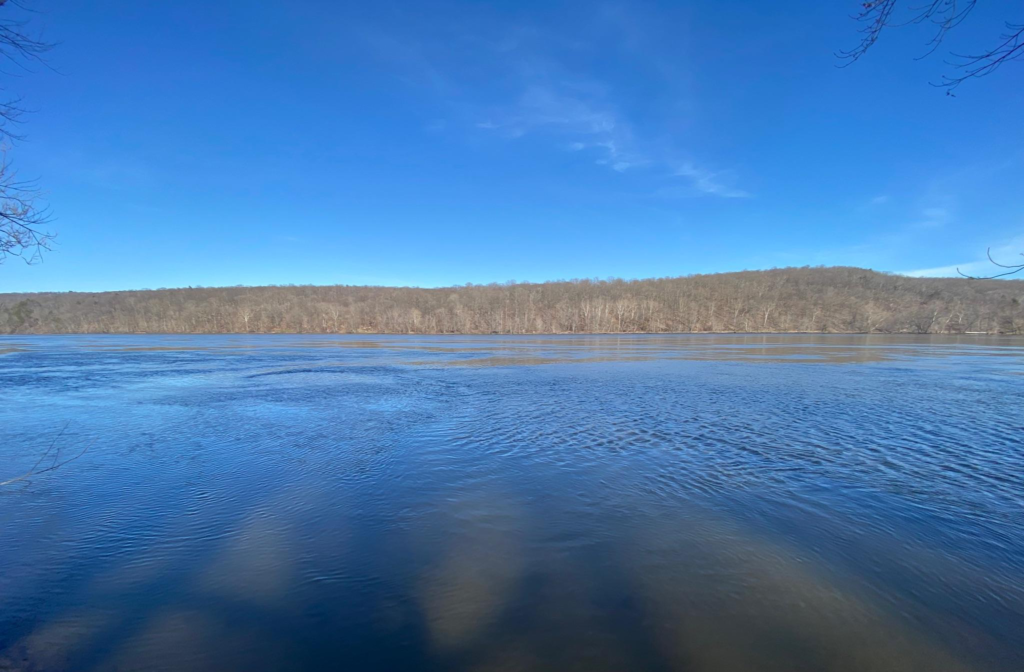
1.
flat Connecticut
with lighter feet I might run
to the other shore
2.
let her be my moon;
lest I be lost, girl in white
do not leave my sight!
as i walked away from
fountain street, a killdeer, a
noisy kind of shorebird, flew
over calling.
3.
over the clamor
of the youth of Wesleyan
the thin, plaintive call
4.
brown and gray and brown
the only hint of green is
the smell of growing
my most personal haiku, I was not entirely over my taken friend when i wrote this.
5.
hands come together
my friends both, boy touches girl
my heart splits apart
6.
just “one” on the clock
how high will it be when
at last I close my eyes?
7.
last assignment done
backpack, sleep in the corner!
time for cousin tote
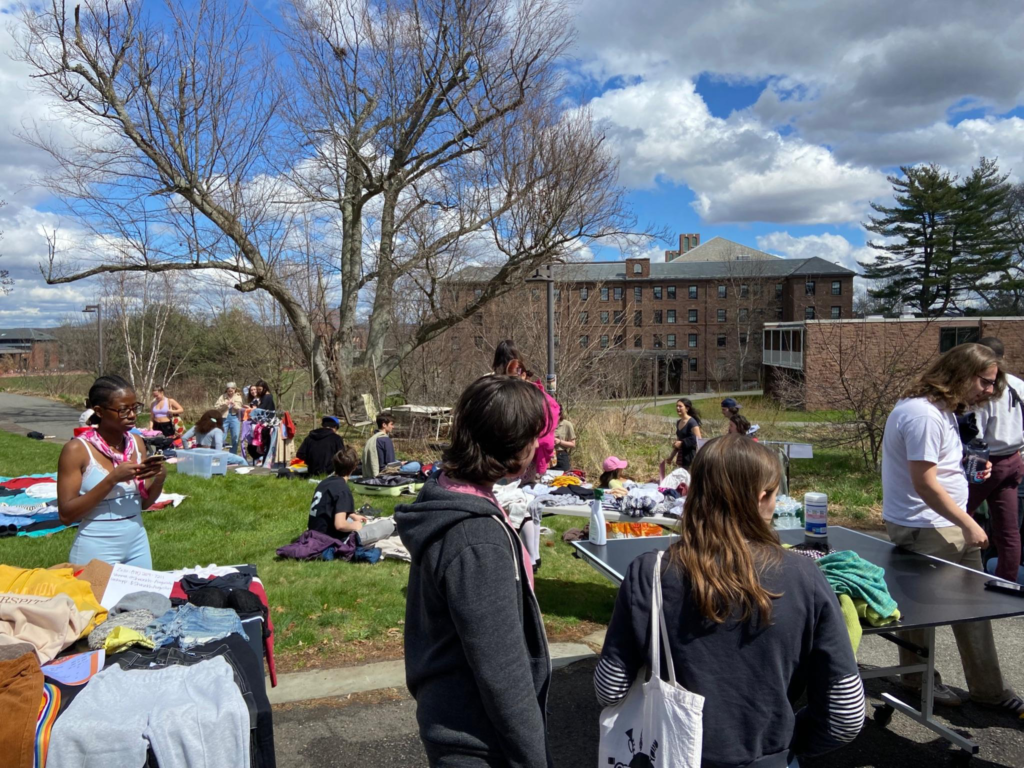
8.
what could be like it?
the clothes, music, the
people –
what will be like this?
9.
was it raining hard?
did Connecticut rush by?
no! I danced and danced!
10.
honk-ah! honk-ah! honk!
could anyone tell me why
these geese are honking?
the pine warbler sings a sweet trill, and one was doing this in the pines outside butts as i napped.
11.
window pine warbler
if you don’t stop singing soon
I’ll never get up!
12.
crossing Church at ten;
i wonder if it’s quiet
on those purple peaks
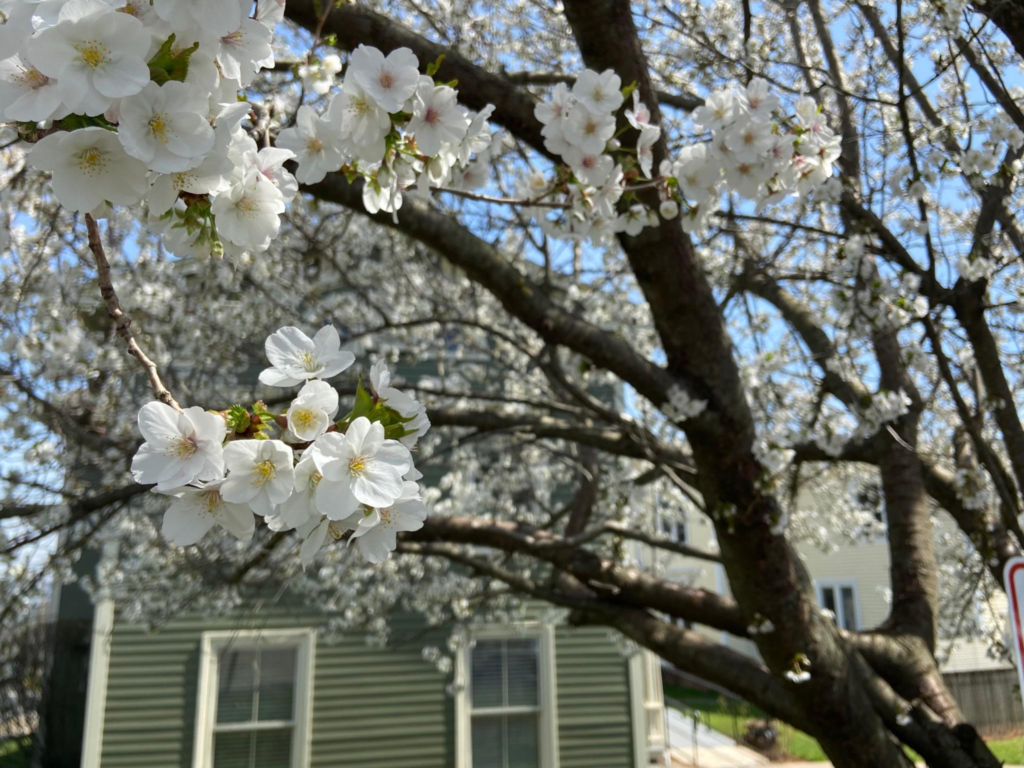
13.
lucky bumblebees!
i rush by, but they
have hours
in the white
blossoms
before getting your
meal at summies,
you need to recite a
series of six
numbers.
14.
at Summies’
counter,
passwords to all I
own have
probably been said.
you can sit on the windowsills of WesCo cafe, a concert space, if you heave with all your might.
15.
it took me five tries
but now that i’m on the sill
I won’t miss music!
16.
the great church of brick
little tree now rosy-white!
the church is still brick
17.
the beach of bluets
bright carpet below the
Nics
still white, still
blooming.
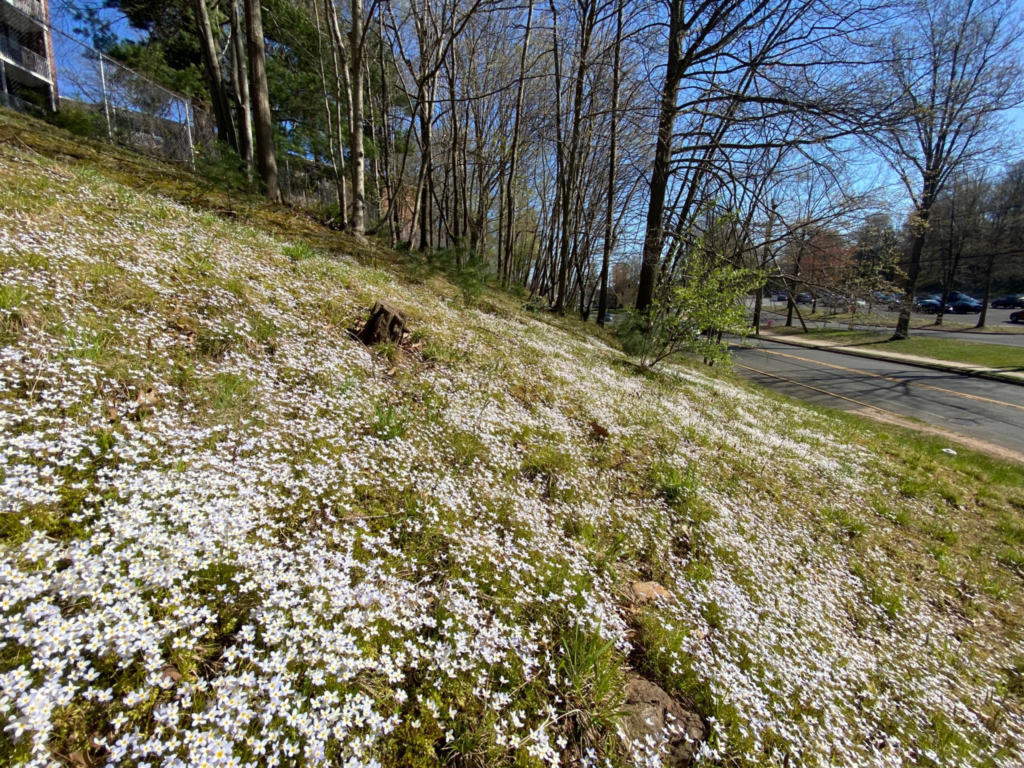
meal swipes at Usdan. the dashes are “syllables” in that they are pauses meant to be held for a
beat. forgive me for playing around with the meter, if you can
18.
swipe! – swipe! – swipe!
hungry farmers swinging scythes
we go in a line
a squirrel was chasing a paper napkin in the wind, for why, i don’t know.
19.
squirrel chases paper
I laugh before I head off
need to get to class
20.
a city on Foss:
policemen, the crowd stand in
the haze of white smoke!
21.
trees outside WesShop
i think they’re trying to sell
strawberry ice cream

22.
poor painted turtle
stuck crossing the railroad
tracks
no problem to help!
23.
spring constellations
i think i see a lion
in the yellow stars
24.
laptop’s little crack
you are as thin as a hair
yet i am laid low
the arrival of flocks of batlike chimney swifts is heralded by birders as a sign of true spring. I’ve
always likened their twittering calls to a handful of tiny pebbles tossed into water.
25.
small pebbles thrown
from a fist into a lake:
first swifts whizzing by!
26.
only in Olin
is the most obtrusive thing
the sound of thinking

27.
if you wish to be
gilded, made lustrous and bright,
the light’s pouring, free!
28.
on the clouds’ bellies
i think i can see Foss’s
green sea reflected
tonight i learned that my friend keeps a black cat in their room, a surprise.
29.
out of the shadows
as we, night-tired, slip in
a sleek piece breaks off
today i went looking for den-emerging spring rattlesnakes only a half-hour away from campus.
when I was first rattled at briefly by an unseen snake, my friend and i were terror-struck, but the
noise was more insect-like than i thought it would be.
30.
that is no cricket
hearts pounding, we jump away
shaking, now we search
